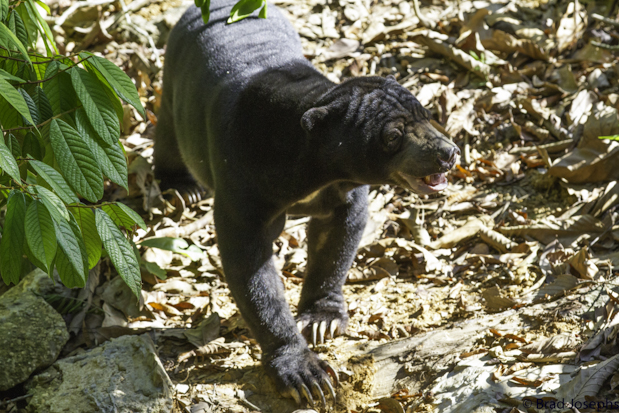
With 6 inch long claws and jaws powerful enough to crack a coconut, the smallest bear in the world is one of the toughest animals for its size on earth. Image Brad Josephs
In only the remotest and truly pristine corners of the southeast Asian rainforests live one of the most amazing, misunderstood, and endangered, of the worlds eight bear species. This is a special bear that may very well go extinct in the wild before the majority of people ever knew they existed. Their plight seems as grave as that of the Giant Panda in 1980’s China. Sun Bear conservation efforts have only just begun, and just as the Giant Panda had George Schaller as their hero, who was the first biologist to unlock the mysteries of their life history, the sun bears have Wong Siew Te.
The Malayan Sun Bear (Helarctos malayanus) is the smallest member of the bear family Ursidae, with the largest males only reaching 175 lbs, only a mere 7% of the weight of the record polar bear (2200 lbs.) Despite their size, locals speak of a demanded respect similar to other larger bears. From what I have heard, I believe they are pound-for-pound one of the toughest, strongest mammals on earth. Dennysius Aloysius, a famous local Danum Valley guide, told me a story about live-trapping sun bears while assisting Wong in his research. They made a make-shift trap from an old steel fuel drum, with a door that slid closed once the bear had set a baited trigger inside. Apparently one of the male sun bears ripped the drum nearly in half, from the inside, in order to escape! Now that is one tough critter.
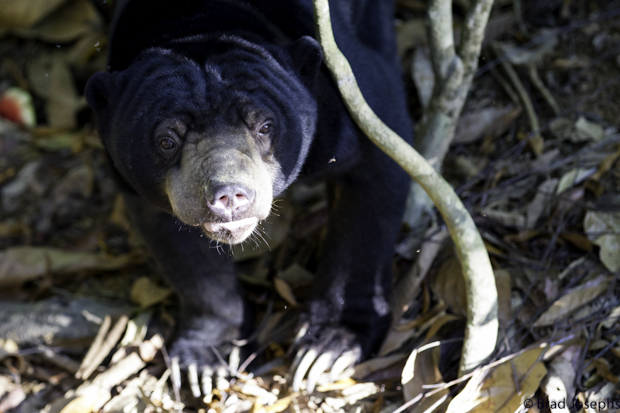
Sun bears have loose folds of skin around their head and neck, similar to a pit bull, so that if they are bitten by a large predator, they can spin around and attack the enemy. Image Brad Josephs
The bears are equipped with some unique features that allow them to utilize a tropical, arboreal niche. Sun bears have formidable, sickle-shaped claws that are an amazing 6 inches in length that allow them to climb through the high rainforest canopy in search of fruits, small reptiles and animals, and the nests of bees and termites. Extraordinarily long tongues assist them with extracting insects and honey from tight spaces, and powerful jaws can crack open even the hardest nuts. Sun bears, like all ursids, also have keen olfactory senses and are very intelligent, so they can locate and acquire a vast variety of food sources from the jungle.
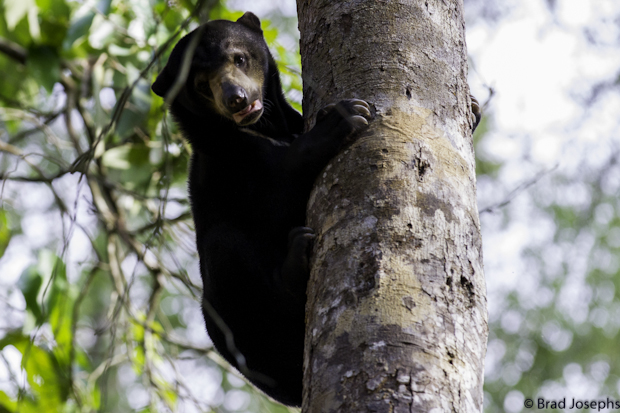
Sun bears are mostly aboreal, or tree dwelling. Thier claw size and structure make them expert climbers. They even build nests in the tree tops.
Sun bears, as with many southeast asian wildlife species, have suffered stifling blows from humans, especially since the mid 1990’s. Rapid economic development, massive-scale logging, and the conversion of rainforest to palm-oil plantations and rice paddies has resulted in devastating amounts of habitat loss. Sun bears have also been targeted by the illegal pet trade for decades, despite their high levels of protection status (IUCN- vulnerable). Conservation is very difficult because there is so little known about these bears, and regional laws in these developing areas are poorly enforced. Sun bears also lack the global love and support that elephants, apes, big cats and other charismatic megafauna possess. Extinction in the wild is a real possibility for these bears.
When sun bears are rescued from illegal pet trade or lost habitat circumstances, they now have a safe refuge. The Sun Bear Conservation Center, adjacent to Sepilok, a similar facility built for orangutans, was established in 2008 by bear biologist Wong Siew Te near the town of Sandakan in Sabah, Malaysian Borneo. Wong, born and raised in Malaysia, earned his master’s degree studying sun bears in the Danum Valley of Borneo under bear biologist Chris Servheen at the University of Montana. He became the first specialized sun bear expert and has dedicated his work and life to their conservation. The goals of the facility are “to provide care and rehabilitation to rescued sun bears; and to increase awareness of sun bears internationally. These aims work to ensure the absolute right of every bear to live in the forest.”
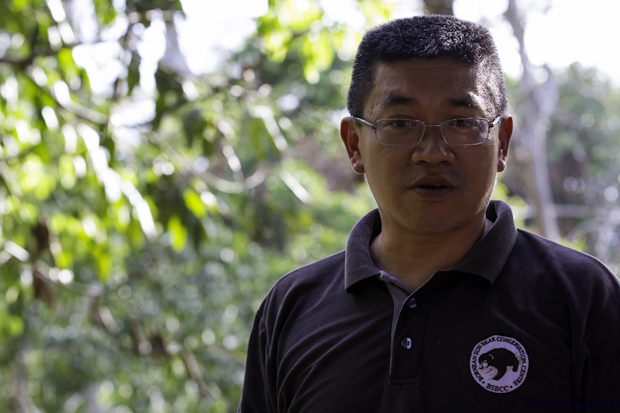
Wong spoke to our group about his work conserving sun bears during our visit to the Sun Bear Conservation Center in Sandakan, Sabah, Malaysian Borneo.
I had heard of Wong’s work through my colleague Chris Morgan as Wong is featured in his upcoming bear conservation film Beartrek (click here to see the trailer!). I finally got to meet him and visit his facility while guiding trips for Natural Habitat in Borneo last fall. Hearing Wong’s knowledge and passion for these bears was a trip highlight, and we were able to view and photograph a number of bears as they demonstrated their amazing climbing ability. Few of our travelers had ever heard of sun bears before, but all left with a special interest and appreciation for these super tough, tiny bears, and Wong the “Sun Bear Hero of Sabah.”
Click here to read about World Wildlife Fund’s work in Borneo.
Click here to visit the Sun Bear Conservation Center’s website
Check out the best wildlife expeditions to Borneo!
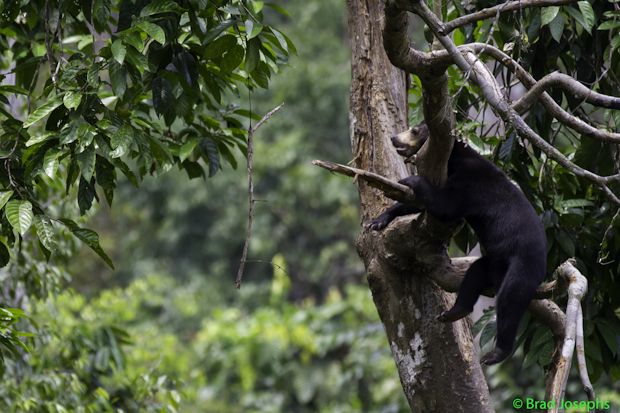
We watched this sun bear find a nice place to relax in the treetops from the observation platform at the Sun Bear Conservation Center. Sandakan, Borneo.
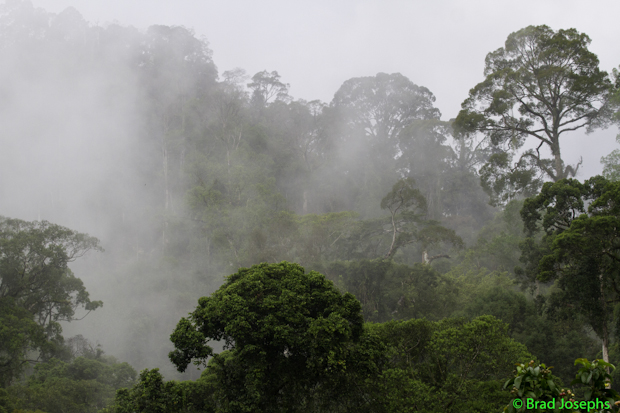
The Danum Valley is one of the last intact strongholds of sun bear habitat. This is the oldest, and among the most diverse of the Earth’s rainforests.

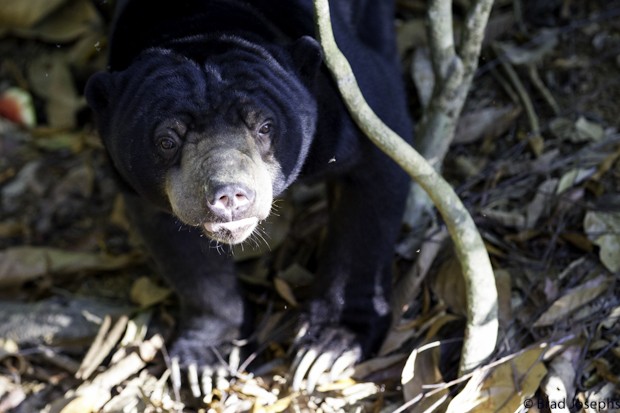

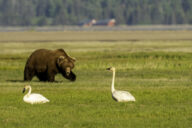

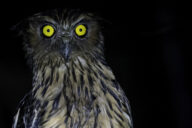
1 Comment
Brad, I took have been struck by the Sun Bear bug and am in awe of the work Wong is doing. I ran a student project from the University of the Sunshine Coast in 2014 where we created and launched the BSBCC’s adoption program, and I am now embarking on another adventure – writing Wong’s biography. While sun bears are a little-known species, Wong is a little-known wildlife hero.